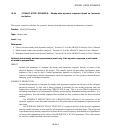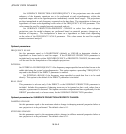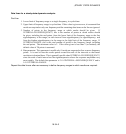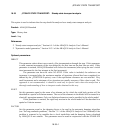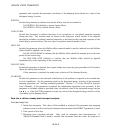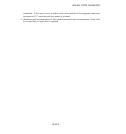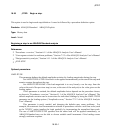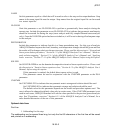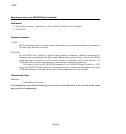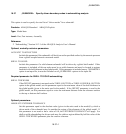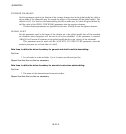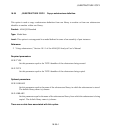
*
STEP
18.36
*
STEP: Begin a step.
This option is used to begin each step definition. It must be followed by a procedure definition option.
Products: ABAQUS/Standard ABAQUS/Explicit
Type: History data
Level: Model
Beginning a step in an ABAQUS/Standard analysis
References:
•
“Procedures: overview,” Section 6.1.1 of the ABAQUS Analysis User’s Manual
•
“Convergence criteria for nonlinear problems,” Section 7.2.3 of the ABAQUS A nalysis User’s Manual
•
“Design sensitivity analysis,” Section 14.1.1 of the ABAQUS Analysis User’s Manual
• *
END STEP
Optional parameters:
AMPLITUDE
This parameter defines the default amplitude variation for loading magnitudes during the step.
Set AMPLITUDE=STEP if the load is to be applied instantaneously at the start of the step and
remain constant throughout the step.
Set AMPLITUDE=RAMP if the load magnitude is to vary linearly over the step, from the
value at the end of the previous step (or zero, at the start of the an alysis) to the value given on the
loading option.
If this parameter is om itted, the default amplitude choice depends on the procedure chosen,
as shown in “Procedures: overview,” Section 6.1.1 of the ABAQUS Analysis User ’s Manual. The
default amplitude variation can be overwritten for individual loadings by using the AMPL ITUDE
parameter on the loading options (“Amplitude c urves,” Section 27.1.2 of the ABAQUS Analysis
User’s Manual).
This param eter is rarely needed, and changing the defaults may cause problems. For
example, the automatic load increm entation schem e in procedures without a real tim e scale (such
as the
*
STATIC option) applies the loads gradually by increm enting the norm alized time scale.
The use of AMPLITUDE=STEP specifies that the entire load will be applied immediately, so
ABAQUS/Standard may not be able to choose suitable small increments if the loading causes
strongly nonlinear response.
18.36–1
ABAQUS Version 6.1 Module:
ID:
Printed on:



